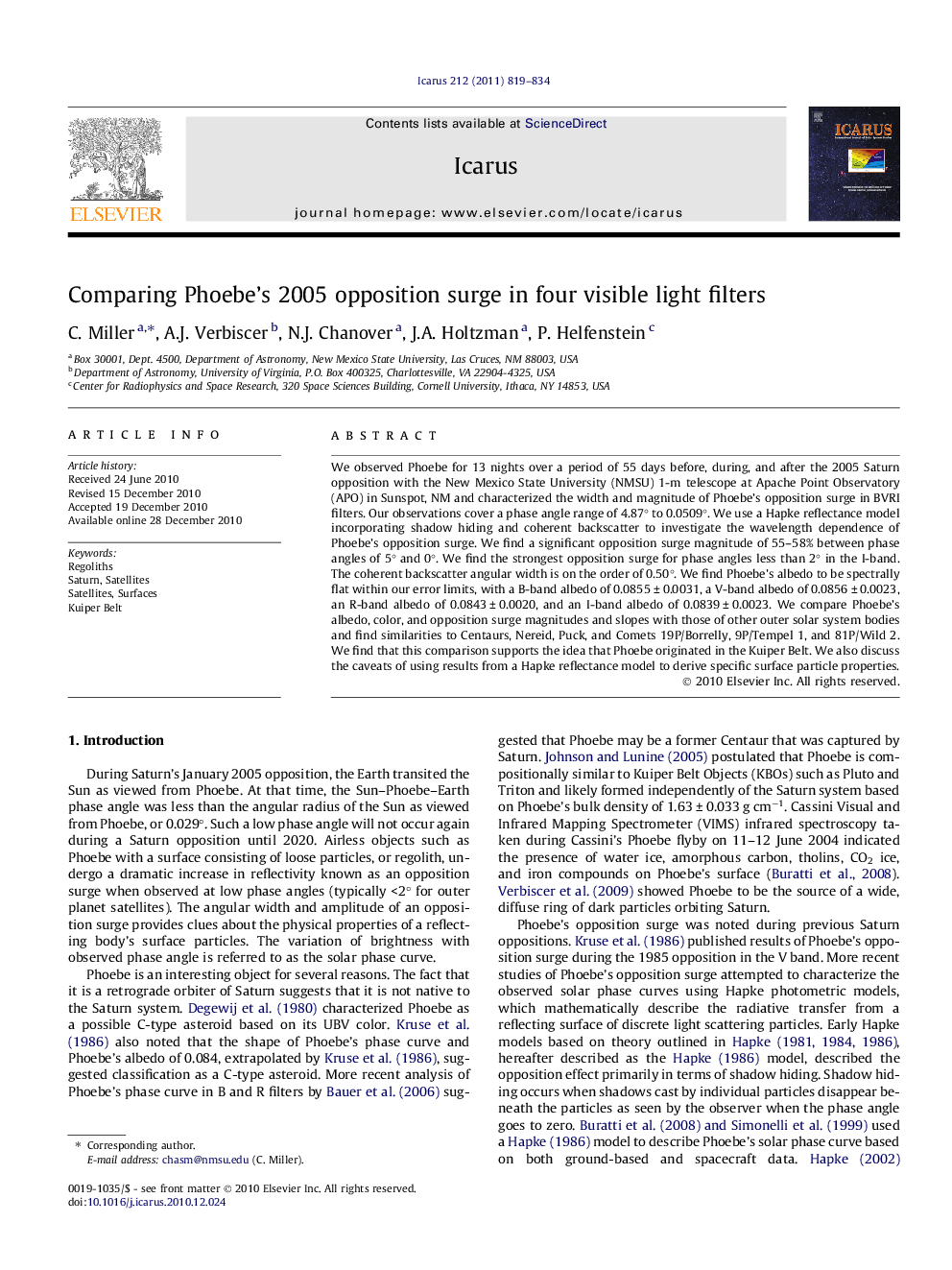| کد مقاله | کد نشریه | سال انتشار | مقاله انگلیسی | نسخه تمام متن |
|---|---|---|---|---|
| 1774604 | 1021169 | 2011 | 16 صفحه PDF | دانلود رایگان |

We observed Phoebe for 13 nights over a period of 55 days before, during, and after the 2005 Saturn opposition with the New Mexico State University (NMSU) 1-m telescope at Apache Point Observatory (APO) in Sunspot, NM and characterized the width and magnitude of Phoebe’s opposition surge in BVRI filters. Our observations cover a phase angle range of 4.87° to 0.0509°. We use a Hapke reflectance model incorporating shadow hiding and coherent backscatter to investigate the wavelength dependence of Phoebe’s opposition surge. We find a significant opposition surge magnitude of 55–58% between phase angles of 5° and 0°. We find the strongest opposition surge for phase angles less than 2° in the I-band. The coherent backscatter angular width is on the order of 0.50°. We find Phoebe’s albedo to be spectrally flat within our error limits, with a B-band albedo of 0.0855 ± 0.0031, a V-band albedo of 0.0856 ± 0.0023, an R-band albedo of 0.0843 ± 0.0020, and an I-band albedo of 0.0839 ± 0.0023. We compare Phoebe’s albedo, color, and opposition surge magnitudes and slopes with those of other outer solar system bodies and find similarities to Centaurs, Nereid, Puck, and Comets 19P/Borrelly, 9P/Tempel 1, and 81P/Wild 2. We find that this comparison supports the idea that Phoebe originated in the Kuiper Belt. We also discuss the caveats of using results from a Hapke reflectance model to derive specific surface particle properties.
Research highlights
► Observed Phoebe during January 2005 Saturn opposition in BVRI filters.
► Observations included phase angles ranging from 0.0509° to 4.87°.
► Modeled the solar phase curve with a Hapke model incorporating coherent backscatter.
► Compared Phoebes photometric parameters to objects that originated in the Kuiper Belt.
► Results support the contention that Phoebe is a captured Kuiper Belt Object.
Journal: Icarus - Volume 212, Issue 2, April 2011, Pages 819–834